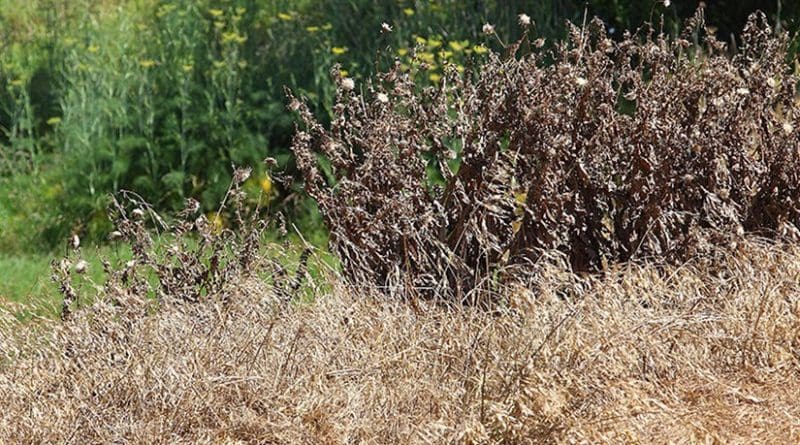Weeds: More Than Individual Landowner Issue
Weed species continue to spread and management costs continue to mount, in spite of best management practices and efforts by research and extension personnel who promote them to land managers, said Dr. Muthu Bagavathiannan, Texas A&M AgriLife Research weed scientist in the Texas A&M soil and crop sciences department, College Station.
The issue is weeds aren’t just a problem for the landowner where they grow, Bagavathiannan said. They are collectively everyone’s problem because they don’t recognize property lines, and that is how they must be managed.
Jointly with Dr. Sonia Graham, a social scientist at the University of New South Wales, Australia, doing a research fellowship at the Autonomous University of Barcelona, Spain, Bagavathiannan led a team of 15 researchers representing entities around the world in a study that looks at weed control through a cross-boundary lens.
The team recently published their findings, Considering Weed Management as a Social Dilemma Bridges Individual and Collective Interests, in the journal Nature Plants. The article can be found at https://rdcu.be/bvoa7.
The paper, they say, is a call to action for scholars and practitioners to broaden their conceptualization and approaches to weed management problems, beginning with evaluating the “public good” characteristics of specific weed management challenges and applying context-specific design principles to realize successful and sustainable weed management.
“The public-goods lens highlights the broader social vision required for successful weed management,” Graham said. “Public goods like weed management are best achieved with the help of many people living and working across landscapes. We need to make the most of the diverse interests, knowledge and skill sets of those involved in managing weeds.”
Agricultural and natural landscapes worldwide are affected by weeds, but management techniques have primarily been developed for individual landowners. The practices rarely look at how control from a collective perspective would improve overall weed management outcomes.
“We suggest that a major limitation of current best management practices is an underappreciation for the complex, multi-scale and collective nature of the weed problem,” he said. “We believe practices will be more effective if they are complemented by landscape-scale design principles that encourage cross-boundary coordination and cooperation.”
Graham added that the team framed the landscape-scale weed management issue as a social dilemma, where trade-offs occur between individual and collective interests. Combining perspectives from biologists and social scientists, the team applied a transdisciplinary systems approach to four pressing landscape-scale weed management challenges:
Bagavathiannan said that across these challenges, the public goods nature of weeds requires active contributions and development of shared goals, and approaches must respect the unique perspectives and diverse capacities of contributors.
“Achieving such an agreement requires good working relationships, or at least shared values, where contributors are willing to transparently demonstrate their efforts and contribute shared resources to help those who are least able to contribute,” he said.
Describing their findings, Graham outlined four new principles for landscape-scale weed management: clearly articulate shared goals and secure commitments from contributors; establish good working relationships and shared values among contributors; make individual contributions transparent; and generate pooled resources to support weakest-link problems or address asymmetries in the public good.
“These principles emphasize the importance of recognizing the cross-boundary nature of different weed management challenges and embracing the appropriate cross-boundary solutions,” said contributor Dr. Alexander Metcalf, a professor of human dimensions at the University of Montana.

